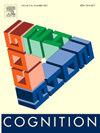The pupillometric production effect: Evidence for enhanced processing preceding, during, and following production
IF 2.8
1区 心理学
Q1 PSYCHOLOGY, EXPERIMENTAL
引用次数: 0
Abstract
The production effect refers to superior memory performance for words read aloud than for those read silently. This finding has usually been attributed to the incorporation of distinctive sensorimotor information into the memory record of items read aloud, facilitating their successful retrieval during the memory test. Less research has explored other cognitive or motivational differences between the aloud and silent conditions. Here we used pupillometry to explore the time course of attention allocated during aloud, silent, and control (say “check”) study trials. Across four experiments, instructions were presented either concurrently with or preceding the word. To permit evaluation of preparatory processing independent of a verbal response, we explored the case where responses had to be withheld until a “Go” signal appeared. In addition to the typical behavioral production effect in memory, each experiment also revealed a pupillometric production effect (greater pupil dilation for aloud than for silent words) that—while separable from the act of speaking itself—was correlated with the size of the memory benefit. Critically, this pupillometric-behavioral correlation did not occur for control (say “check”) trials. We interpret these findings as support for an initial attention-focusing effect that comes from preparing for and executing vocalization during both aloud and control trials, followed by a phase of distinctive processing of target word features that is unique to aloud trials.
瞳孔生产效应:生产前、生产中、生产后加工能力增强的证据。
产生效应是指大声朗读的单词比默读的单词记忆力更好。这一发现通常归因于将独特的感觉运动信息整合到大声朗读的项目的记忆记录中,从而促进了记忆测试中它们的成功检索。很少有研究探索大声和沉默条件下的其他认知或动机差异。在这里,我们使用瞳孔测量法来探索在大声,沉默和控制(说“检查”)学习试验中分配注意力的时间过程。在四个实验中,指令要么与单词同时出现,要么在单词之前出现。为了允许评估独立于口头反应的准备过程,我们探索了在“Go”信号出现之前必须保留反应的情况。除了典型的记忆行为产生效应外,每个实验还揭示了瞳孔产生效应(大声说话时瞳孔扩张比沉默说话时瞳孔扩张更大),尽管这与说话本身的行为是分开的,但它与记忆效益的大小相关。关键的是,这种瞳孔测量与行为的相关性并没有出现在对照试验中(比如“检查”)。我们将这些发现解释为支持最初的注意力聚焦效应,该效应来自于在大声和控制试验中准备和执行发声,随后是大声试验中独特的目标词特征处理阶段。
本文章由计算机程序翻译,如有差异,请以英文原文为准。
求助全文
约1分钟内获得全文
求助全文
来源期刊

Cognition
PSYCHOLOGY, EXPERIMENTAL-
CiteScore
6.40
自引率
5.90%
发文量
283
期刊介绍:
Cognition is an international journal that publishes theoretical and experimental papers on the study of the mind. It covers a wide variety of subjects concerning all the different aspects of cognition, ranging from biological and experimental studies to formal analysis. Contributions from the fields of psychology, neuroscience, linguistics, computer science, mathematics, ethology and philosophy are welcome in this journal provided that they have some bearing on the functioning of the mind. In addition, the journal serves as a forum for discussion of social and political aspects of cognitive science.
 求助内容:
求助内容: 应助结果提醒方式:
应助结果提醒方式:


